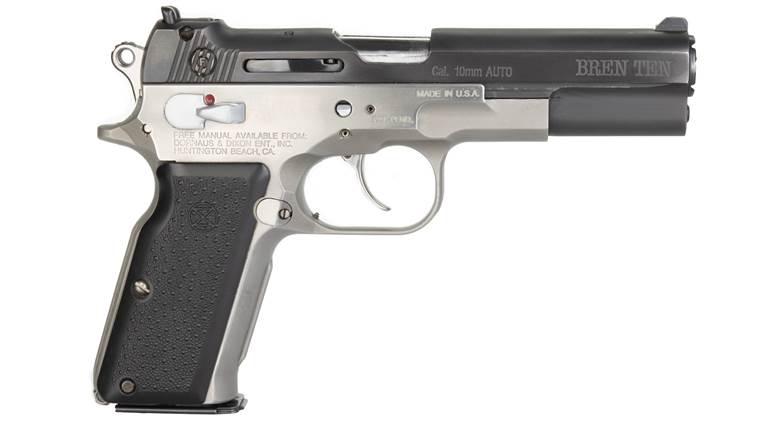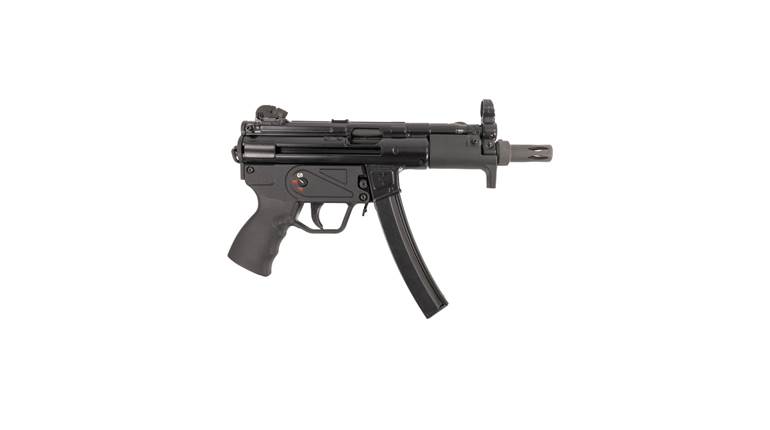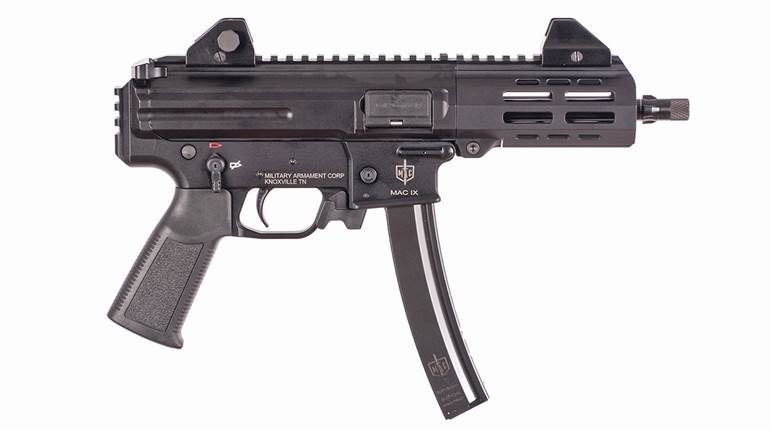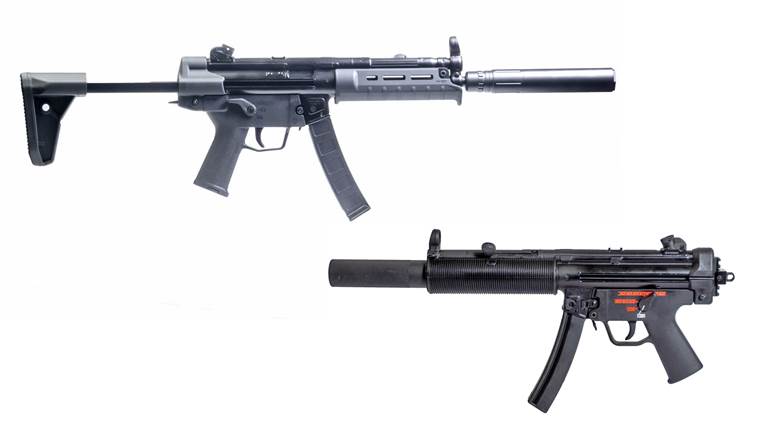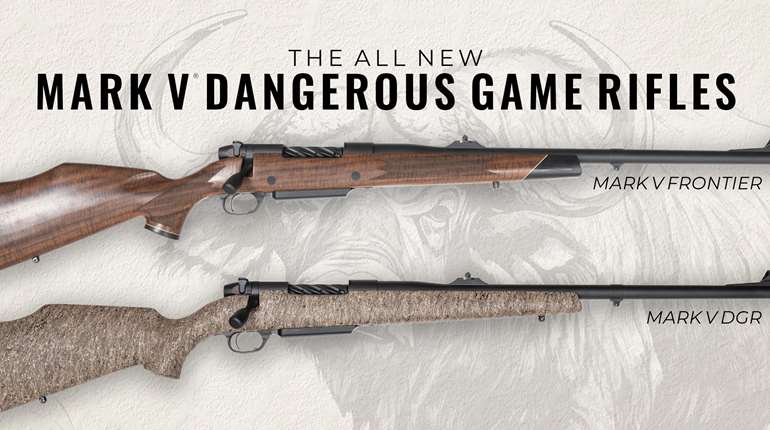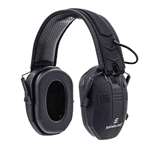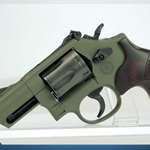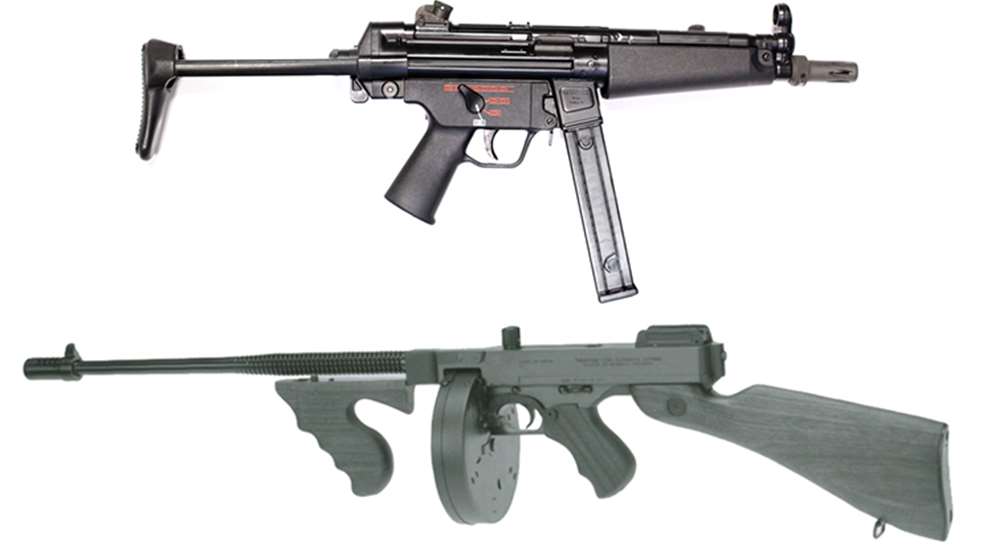
When the FBI adopted the 10 mm Auto in 1989 they naturally sought a shoulder-fired arm that would chamber the same cartridge. The formidable ballistics of their newly chosen pistol cartridge was multiplied in the longer barrel and fully automatic capability of a submachine gun.
The FBI’s first thought was to look no further than the venerable submachine gun that defined the G-Man, the Thompson. Although the bureau had discontinued the use of the .45 ACP Thompson in the early 1970s, a few of the submachine guns were kept in their inventory. So in 1990 the FBI’s first attempt at having a 10 mm submachine gun was to send a handful of original Thompsons back to Auto-Ordnance (the post-war, West Hurley, N.Y., itineration of the company) to be converted to 10 mm Auto. Converted FBI Thompsons can be identified by their smooth external barrel profile that lacks cooling fins of the .45s they were modified from and the “10 mm” written on their stock in yellow paint.
Auto-Ordnance sought to capitalize on the 10 mm Tommy guns it had made for the FBI, referencing the conversions in a 1991 advertisement about its newly made 10 mm Thompson for the civilian market, a 16”-barreled, semi-automatic 1927A1 Deluxe. Calling it a “new twist on the most historic of all weapons,” the civilian 10 mm Thompson was produced from 1991 to 1993, making it one of the rarer semi-automatic rifle versions of the famous Thompson submachine gun.
The FBI used the converted Thompsons as a test platform for the 10 mm cartridge in a submachine gun and the national media caught on to a rumor that Thompsons were coming out of the mothballs. “FBI’s Tommy Guns to Blaze Again,” one headline declared in 1990. The 10 mm Thompson’s career, however, was short-lived. The FBI had been using the 9 mm Luger Heckler and Koch MP5 since the mid-1980s and the bureau approached the company about chambering the MP5 in 10 mm. [Back in 1987 Jeff Cooper had said “… in combination with a closed-bolt machine pistol such as the MP5 [the 10 mm Auto] could raise the combat potential of our military and police special tactical teams very considerably.”]. In 1991 HK introduced the MP5/10. 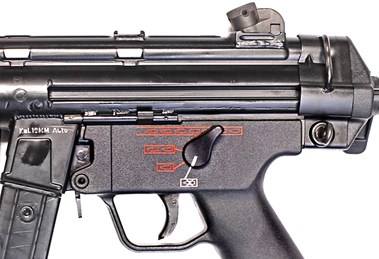
The MP5/10 was unique not only in its chambering, but in the fact that it featured a bolt hold-open device that was added to the design at the FBI’s request. MP5/10s were made exclusively for the FBI and came equipped with a burst fire-control mechanism (semi-auto/burst/full-auto). Heckler & Koch advertised MP5/10 performance with Norma 170-gr. ammunition as 1473 f.p.s. and 825 ft.- lbs. at the muzzle of the submachine gun’s 8.85" barrel.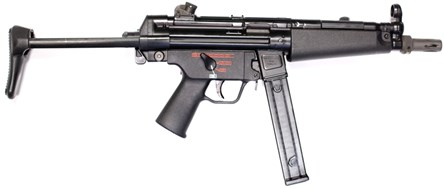
The HK design also solved the issue of the wide range of performance in 10 mm Auto ammunition. Two locking pieces (the part that controls the duration of delay in the action opening in a roller-delayed blowback weapon) were designed for the MP5/10. Labeled “HI” or “LO” impulse, the LO impulse locking piece was designed to work with the standard FBI load, while the HI impulse locking piece would handle full-power 10 mm ammunition, like Norma’s original loadings. Swapping the locking piece is easy to do in the field with an MP5 stripped for normal maintenance.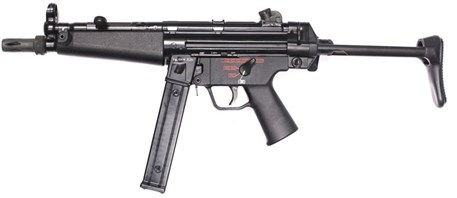
Just as the .40 S&W eclipsed the 10 mm Auto in the law enforcement handgun market, it also overshadowed the 10 mm MP5. Later in 1991 HK adapted the submachine gun to the new .40 S&W cartridge as well, releasing the MP5/40, a design that was widely adopted by many law enforcement agencies that had chosen handguns in that caliber. Both .40 S&W and 10 mm MP5s were discontinued in 2000. The currently manufactured HK UMP submachine is available in .40 S&W, but was never offered in 10 mm. While the FBI still has the MP5/10 in its active inventory and occasionally fields them, the submachine gun, in general, has been replaced in FBI service by 5.56 mm rifles.
The 10 mm Auto breathed new life into an iconic American submachine gun and also led to a uniquely American version of the classic modern German submachine gun. Both paved the way for the shoulder-fired 10 mm firearms that we have today.
Additional Reading:
Nine Lives of the 10 mm Auto
Field Notes: 10 mm Auto












